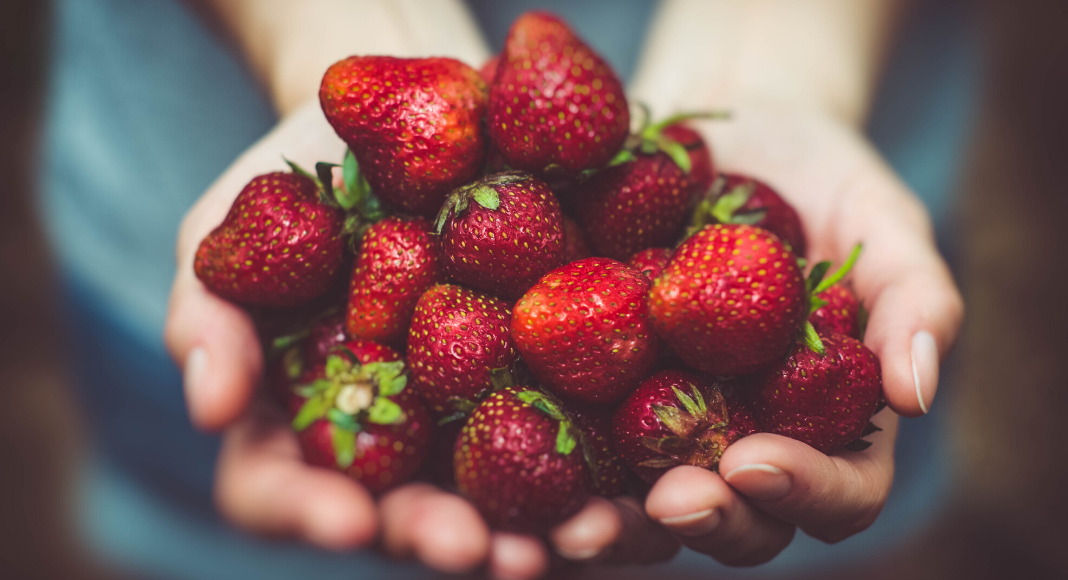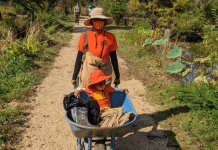The pandas are gone. The beautiful corner of the Smithsonian National Zoo where we watched them grow up, eat piles of bamboo, climb trees and roll down the hill in the snow is now empty.

On November 8, the zoo’s pandas– Mei Xiang, Tian Tian and their newest cub, Xiao Qi Ji– boarded a Fed-Ex plane to China. Their departure marks the end of more than 50 years of Chinese pandas at the National Zoo. And it is the end of an era for those of us who have grown up in Washington, DC alongside them.
I have never known Washington, DC, without pandas. Like me, Mei Xiang and Tian Tian came here in the year 2000 as young adults. Over the next two decades, the pandas settled into their life here, moved into a larger, renovated habitat and had babies in the city. I eventually did the same.
The National Zoo’s pandas have always belonged to China, but it felt like they were ours. The pandas were pictured on metro cards, celebrated in statues around the city and featured on souvenirs. Like many of us who moved to DC and made it our home, the pandas became a part of the fabric of the city. We watched them celebrate birthdays with ice popsicle birthday cakes. We brought our children to see them.
DC Pandas Parenting
We celebrated when Mei Xiang gave birth to the zoo’s first surviving giant panda cub in 2005. Before he was named Tai Shan, he was affectionately known to Washingtonians as “Butterstick,” because he was the size of a stick of butter when he was born. Butterstick the Panda was a classic Halloween costume that year.
The zoo’s breeding program had a rocky period after that from 2007-2011. Mei Xiang experienced a number of pseudo-pregnancies and pregnancy loss. For me, this coincided with a period when I was experiencing unexplained infertility. Infertility can be lonely and heartbreaking for some women, and it was for me. It was hard to talk about it, and it felt like everyone I knew was inviting me to a baby shower. And so I found myself relating viscerally with a 230 pound non-verbal bear, whose (probably very typical) sleeping and staring patterns felt very relatable to my own despair.
Mei Xiang gave birth to her second surviving cub, Bao Bao, in August 2013. My second son was born a month later.
I spent so many days in those early years of parenting at the zoo. My sons would dance with delight if I told them it was a zoo day. Then we’d slog up the steep incline of the zoo’s hill. It was an accomplishment to make it all the way to the Asia Trail, where the pandas lived. I’d have to push a stroller or coax a toddler along. We would enjoy watching the baby panda climb on his mom, while she tried to sleep or eat bamboo. (again, relatable!)
The birth of Xiao Qi Ji, which means “little miracle,” in 2020 was a spot of joy when there was little to celebrate in the midst of the pandemic. His debut on the panda cam in Jan. 2021 was a highlight during a mostly-miserable year of distance learning in DC. My younger son’s first grade class took virtual “field trips” to the zoo to check on him.
But baby pandas and children grow up quickly. My children are tweens (or nearly tweens) now. Walking up the zoo’s hilly incline is no longer a problem. But when I told them last month that we had tickets to the panda farewell event at the zoo, they did not squeal with delight. They thought they had better things to do. However, once we were there, it was like the old days again, laughing at the way Tian Tian slept with his body draped over a rock and how Mei Xiang ripped the bamboo leaves off the stalks with her teeth.
DC Pandas Farewell
Over the years, the pandas have taught us how to say goodbye. Each of Mei Xiang’s other three cubs were sent back to China. Bao Bao left in Feb. 2017, one month after the inauguration of President Donald Trump. The timing of his departure had nothing to do with the change in administration, but it felt like one more charismatic Washingtonian moving away in a season of farewells.
We’ve said goodbye before, but this one is different. The first pandas at the National Zoo, Ling-Ling and Hsing-Hsin, came in 1972 and lived here until their deaths in 1992 and 1999. Mei Xiang and Tian Tian were sent from China the following year. But we don’t know if China will ever send more pandas for the zoo’s Asia Trail.
Zoo staff are calling this a “hiatus” in their successful conservation and breeding program for the Giant Panda. But Chinese officials have not said when any pandas might return to the United States.
In a city where friends and political administrations come and go, I have learned to say goodbye with some frequency in Washington, DC. But I have never learned to enjoy it.
So I sadly say farewell to the zoo’s winsome panda family. They always belonged to China, and I knew they would leave some day. I am still sad to see that day arrive. My children, too, will wing away before I know it. They were never ours, but they felt like ours for a while.











